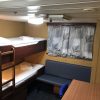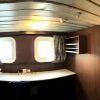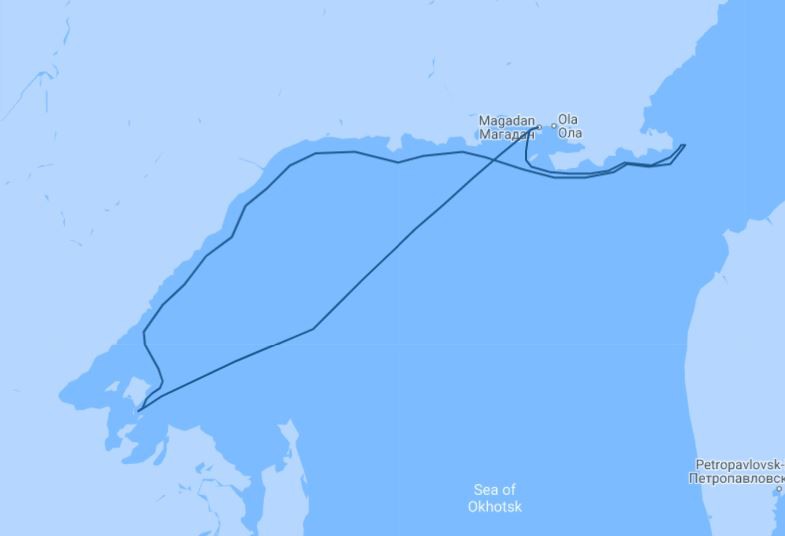Description
Little known outside of Russia and seldom visited by westerners, Russia’s Sea of Okhotsk dominates the Northwest Pacific. Bounded to the north and west by the Russian continent and the Kamchatka Peninsula to the east, with the Kuril Islands and Sakhalin Island guarding the southern border, it is almost landlocked. Its coasts were once home to a number of groups of indigenous people: the Nivkhi, Oroki, Even and Itelmen. Their name for this sea simply translates as something like the ‘Sea of Hunters’ or ‘Hunters Sea’, perhaps a clue to the abundance of wildlife found here.
In 1725, and again in 1733, the Russian explorer Vitus Bering launched two expeditions from the town of Okhotsk on the western shores of this sea in order to explore the eastern coasts of the Russian Empire. For a long time this town was the gateway to Kamchatka and beyond. The modern town of Okhotsk is built near the site of the old town, and little has changed over the centuries. Inhabitants now have an air service, but their lives are still dominated by the sea.
Perhaps no other sea in the world has witnessed as much human suffering and misery as the Sea of Okhotsk. Between 1932 and 1953 it is estimated that over 3 million prisoners (the vast majority of them innocent) were transported across the Sea of Okhotsk to the Gulags of the Kolyma Goldfields. It is estimated that only 500,000 of those prisoners survived to make the journey home. The town and port of Magadan were built to process these prisoners. Today there is little evidence of the town’s sordid past, but the Mask of Sorrow, a large monument on a hill overlooking the town, is a poignant reminder of Magadan’s origins.
The upper regions of the Sea of Okhotsk remain frozen for much of the year and winter storms make it an inhospitable place. However the lure of a rich fishery and, more recently, oil and gas discoveries means this sea is still being exploited, so nothing has changed. In 1854, no fewer than 160 American and British whaling ships were there hunting whales. Despite this seemingly relentless exploitation the wildlife thrives, albeit probably not in the numbers it used to, but still in numbers that boggle the mind. The beautifully marked and rare Ribbon Seals are abundant here. On the small island of Iony and globally important seabird nesting sites on Yamskie Islands, part of the Magadanskii Nature Reserve, hundreds of Steller Sea Lions haul out here each year to breed.
Seabird numbers in the Sea of Okhotsk can only be described as spectacular. We are talking numbers rarely seen anywhere else in the world, such as an estimated 7 million on Matykil Island in the Yamskiye Archipelago. Then there are islands like Talan where the sky darkens when the Crested Auklets start massing offshore before returning each evening. Birds there include various species of guillemots, puffins, auklets and fulmars, but the richness of birdlife is not restricted to pelagic species. The Sea of Okhotsk has one of the highest concentrations of the majestic Steller’s Sea Eagle of anywhere in the Russian Far East. Waterfowl are common, as are many migratory species. Harder to see, but not uncommon on this expedition, are the magnificent Kamchatka Brown Bear and other mammals such as the Arctic Ground Squirrel.
This is a truly unique expedition in that it travels through a little known sea. It is a region with a history that up until recently has been suppressed and not spoken about, the magnitude of the tragedy of Stalin’s Gulag system is only now becoming apparent. It is also an area with very significant and important wildlife values, both terrestrial and marine. There are still discoveries to be made and so for the inquisitive, adventurous and open-minded traveller, this is a ‘must do’ expedition.
Note: Expeditioners on this voyage have the option to stay on board as we transfer Akademik Shokalskiy to Petropavlovsk-Kamchatskiy at the completion of the voyage – an extra three nights free! These will be sea days, with a minimal expedition programme, and a chance to unwind in the library, bar and on the bridge. Those staying on board will disembark at Petropavlovsk-Kamchatskiy on 30 June 2021.
















